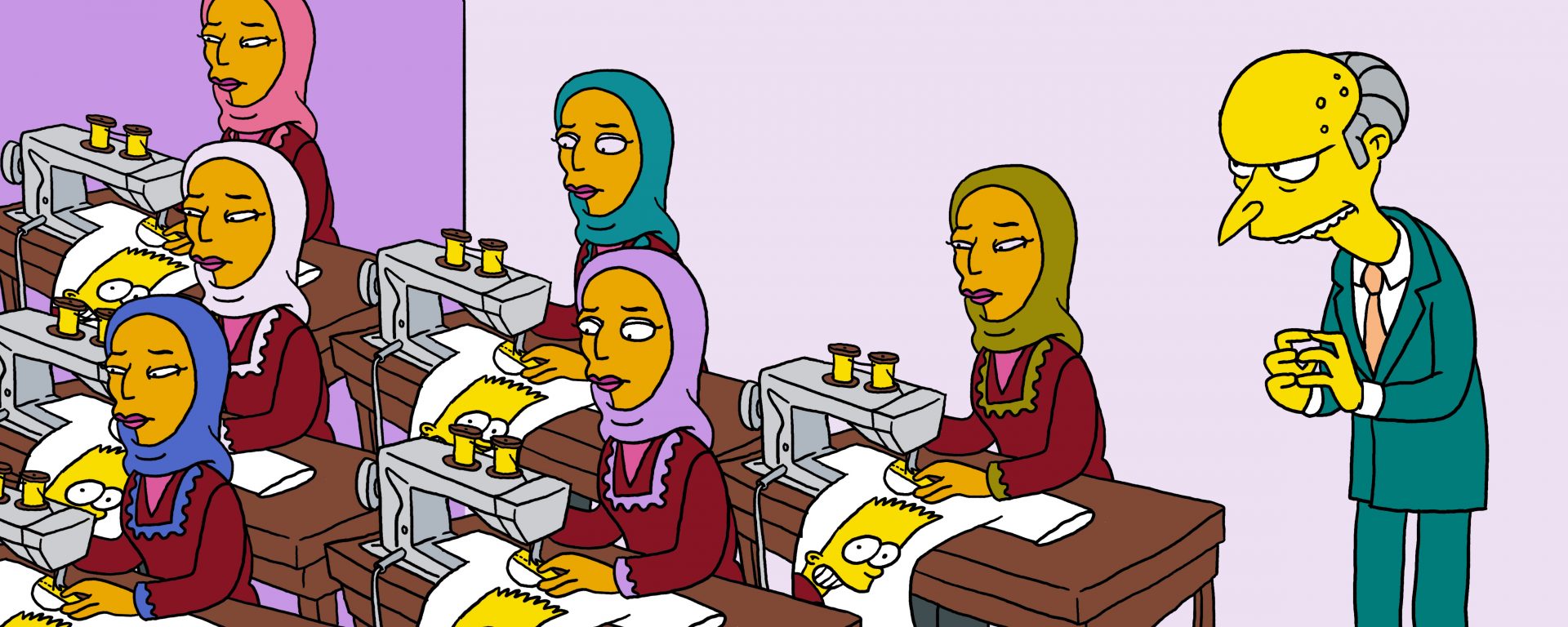
Why does the garment industry’s structure matter to you? Part II:
Many people working to improve respect for human rights in the garment industry are experts in fields like human rights, law or industrial relations. They are not usually experts in the industry or in supply chain structures. So it is worth exploring some of the assumptions we tend to share about what ‘an industry’ is, and how those assumptions shape our work.
Based on many years of discussions with practitioners, I would argue that when people speak of an industry they often have a mental picture of something that roughly resembles the oil or steel industries. This archetypal idea of what an industry looks like seems to have two main characteristics. One has to do with the structure of the individual companies that comprise the industry; the other has to do with the number of companies in a given industry. And both are worth exploring, because they tend to inform many assumptions about the garment industry and how to fix it.
Company structures
When we think of companies in a major industry – especially in the age of globalisation – we tend to envision a business that is highly organised, and dominated by and controlled from the top.
The popular idea of a company structure describes something that is, roughly speaking, best described as ‘vertically integrated’. Vertical integration means that a company owns or controls multiple steps up and down their supply chain. For example, a steel company may own not just the foundries where steel is made, but also the iron mines for raw materials, the coal mines that power the factories, and the sales organisations who sell finished goods to auto manufacturers or construction companies. Similarly, oil companies may own everything from the oil rigs through refineries to gas stations where you fill up your car.
Company structure matters when trying to reform industries, because it helps to identify who has control of what’s going wrong, and who has the power to make changes. Even if some of these companies get pretty creative in trying to avoid responsibility through the creation of international subsidiaries, shell companies, and other legal strategies designed to limit liability, it is pretty clear who ultimately has control of the supply chain – and therefore who is responsible for working conditions. Regulatory, activist and labour-organising strategies can be developed accordingly – usually focused on the parent company at the top of the supply chain – because there is a clear command and control structure in the company.
Vertically integrated companies tend to have another characteristic which is important to note. Generally speaking, the upstream parts of supply chains – iron mines for example – have a single ‘customer’ – the parent company. This may seem obvious, but there are in fact many other ways of organising supply chains, so such a ‘single-customer’ relationship should not always be assumed.
It’s not surprising that this idea of vertically integrated, centrally-controlled corporate structure is so widespread. It is a corporate form that has not changed enormously since the early 20th century, and it is the vision of large corporations widely seen in pop culture – from Blade Runner’s Tyrell Corporation to The Simpsons’ Mr. Burns. This kind of vertical integration, combined with efforts to create monopolies, led to the creation of anti-trust law in the first half of the 20th century. Indeed, John D. Rockefeller and the Standard Oil Trust may still be the archetypal ‘bad company’ that shapes our views of corporate misbehavior.[1]
Who makes up an industry?
So if vertical integration forms one half of our popular idea of an industry, I’d argue the other half has to do with the size and number of companies that make up that industry. When it comes to major industries, I find we tend to assume that those industries are highly concentrated. In other words, a small number of companies comprise most of the industry, which is true for industries like steel, oil, cellphones and chocolate.
The degree of concentration in an industry is also important when it comes to reforms, because it determines which and how many companies need to be engaged with to effect change. In highly-concentrated industries, promoting change within a few dominant companies may be enough to directly improve conditions for large numbers of workers, and to prompt change in the rest of the industry.
There are many challenges to changing highly-concentrated industries, as the main companies may be large and resistant to change, but it is at least clear who needs to be involved in change.
Many people are familiar with the idea of concentration in terms of sales, or market share. If a million widgets[2] are sold each year, and three companies each sell 250,000, you have a highly-concentrated industry. Concerns about concentration grow out of anti-trust law, and are currently being seen afresh in concerns about new industries like social media or internet search, where companies like Google have a near-monopoly. But it is worth remembering that when it comes to human rights, market concentration is not necessarily the most important thing to look at. What may be more important is concentration in the labour market – e.g. of all the people employed in the industry, how many are employed by each company? For a variety of reasons – like automation and efficiency levels – share of sales and share of employees can be quite different.
So what does this archetypal industry have to do with the garment industry?
I’m hoping by now that some aspects of this popular image of an industry are sounding familiar: An industry made up of a small number of powerful companies who dominate the market, who own the companies in their supply chains, and who could order change in their individual supply chains tomorrow if they really wanted to.
I’ve taken the time to lay out this archetype because I believe it informs, in an often unspoken way, many of the debates around how to improve human rights compliance in the garment industry. The problem is, this archetype bears almost no resemblance whatsoever to the garment industry. And, as I’ll argue next time, solutions to the garment industry’s problems that assume a highly concentrated, vertically integrated industry like the one in our collective imagination, are mostly doomed to failure.
[1] For a great introduction to Standard Oil, and how it still affects both the popular imagination and government policy, check out National Public Radio (U.S.)’s Planet Money podcast: https://www.npr.org/sections/money/2019/02/15/695131832/antitrust-1-standard-oil
[2] For the non-native speakers: a ‘widget’ is the English term for a generic manufactured product, used in examples like this.

